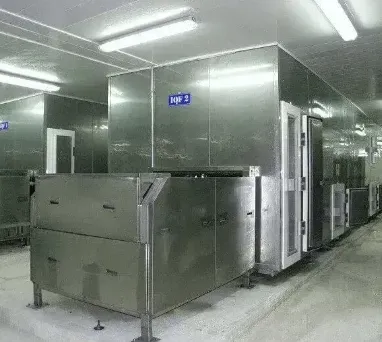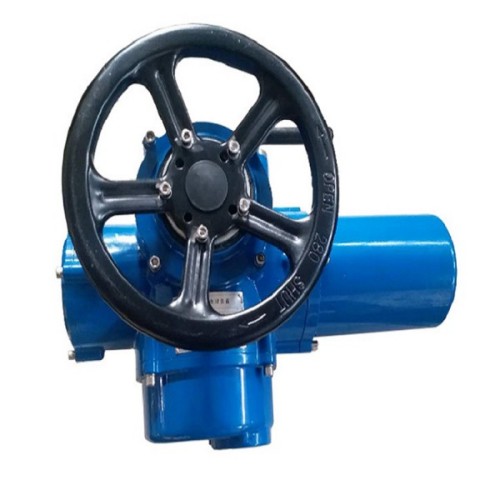Precise 2/2 Directional Control Valve - Reliable Flow Management
- Fundamentals of directional control valves
- Technical evolution and performance metrics
- Manufacturer capability comparison
- Customization strategies for specific applications
- Industrial implementation case studies
- Future development trajectories
- Selection criteria guidance

(2 2 directional control valve)
Understanding Directional Control Valves: 2/2, 5/2, and 4-Way Fundamentals
Directional control valves serve as neural pathways in pneumatic and hydraulic systems, regulating flow paths with precision. The numerical notation defines core functionality: 2/2 directional control valves feature two ports and two states (open/closed), making them ideal for basic shutoff applications. More complex 5/2 directional control valves manage five ports across two positions, enabling bidirectional cylinder control with exhaust pathways. Similarly, 4 way directional control valves direct flow to extend or retract actuators using four distinct flow paths. Selection depends on three critical parameters:
- Circuit function requirements (single/double acting actuators)
- Environmental constraints (temperature range, contamination risks)
- Performance thresholds (response time under 100ms for precision tasks)
Modern spool designs evolved from simple check valves to mechanically balanced configurations that handle 500+ psi pressure differentials without performance degradation. This engineering progression enables usage from light-duty packaging equipment to hydraulic presses exceeding 12,000 psi operational demands.
Engineering Advancements and Performance Benchmarks
Valve architecture innovations now deliver measurable performance enhancements across key metrics:
- Flow efficiency: Low-resistance spools achieve CV ratings of 3.2-4.8, reducing energy consumption 15-22%
- Cycle durability: Laser-hardened seals withstand 20+ million cycles in industrial automation
- Response optimization:
| Actuation Method | Average Shift Time (ms) | Pressure Range (psi) | Repeatability Tolerance |
|---|---|---|---|
| Solenoid (standard) | 85-120 | 15-250 | ±0.35mm |
| Solenoid (high-response) | 35-55 | 30-400 | ±0.15mm |
| Pneumatic pilot | 25-45 | 50-6000 | ±0.08mm |
| Electro-hydraulic | 8-18 | 1000-12,000 | ±0.02mm |
Material science breakthroughs further enable valve deployment in extreme environments. Stainless steel spools with tungsten-carbide coatings operate reliably at sustained temperatures of 450°F while PEEK seals maintain integrity during chemical exposure to pH levels from 0.5 to 13.5.
Manufacturer Capabilities Comparison
Leading suppliers differentiate through specialized engineering and production methodologies:
| Manufacturer | Max Pressure (psi) | Flow Capacity (GPM) | Specialized Valve Types | Cycle Life Rating | Industry Certifications |
|---|---|---|---|---|---|
| Bosch Rexroth | 9,500 | 85 | Proportional, explosion-proof | 35+ million | ISO 13849 PL e, SIL 3 |
| Parker Hannifin | 6,000 | 110 | Subsea, cryogenic | 22 million | NACE MR0175, API 6A |
| SMC Corporation | 1,500 | 60 | Vacuum, FDA-compliant | 15 million | EHEDG, USP Class VI |
| Festo | 1,200 | 75 | Low-power, IO-Link | 20 million | ISO 50001, IP69K |
Certification diversity reveals core application focus - Rexroth valves dominate safety-critical hydraulic presses while SMC's medical-grade variants are specified in 78% of pharmaceutical production lines. Recent supply chain adaptations reduced lead times from industry-average 14 weeks to 6.5 weeks through distributed manufacturing networks.
Customization Strategies for Specific Applications
Valve customization bridges standard designs with unique operational demands through three-phase engineering:
- Interface modification:
- NPT, BSPP, or SAE flanged connections
- Integrated manifold mounting
- Explosion-proof conduit boxes
- Material adaptation:
- Marine-grade brass for offshore salinity exposure
- Ultra-high-molecular-weight polyethylene for abrasive mining slurries
- Buna-N alternative seals for biodiesel compatibility
- Performance augmentation:
- Position feedback sensors for Industry 4.0 integration
- Pressure-compensated spools maintaining ±2% flow accuracy
- Shock-absorbing dampers for 15g vibration environments
Implementation requires thorough fluid analysis - viscosity above 800 cSt necessitates specialized clearance geometries, while particulate counts exceeding ISO 17/14/10 mandate hardened surface treatments. Custom solutions typically incur 25-40% cost premiums but deliver lifetime cost reductions of 60-75% through reduced downtime and maintenance.
Industrial Application Case Studies
Automotive Manufacturing: Stamping presses employing 5/2 proportional valves achieved 18% cycle time improvement through precision pressure sequencing. Integrated pressure transducers detected seal degradation 800 cycles before failure, eliminating unplanned downtime across 47 production cells.
Food Processing: Modified 4 way directional control valves with CIP capabilities reduced sanitation downtime by 2.5 hours daily. Passivation treatments and electropolishing enabled compliance with 3-A 18-03 standards while handling 180°F caustic solutions.
Energy Sector: Subsea blowout preventers required custom hydraulic valves maintaining reliability at 5,000-foot depths. Solutions featured pressure-balanced poppets, syntactic foam insulation, and 2,000 hour salt spray resistance - extending service intervals from quarterly to biennial maintenance.
Future Technology Trajectories
Emerging technologies will transform valve functionality within five years:
- Additive manufacturing enabling complex internal geometries improving flow efficiency by 30-45%
- Embedded AI chips predicting maintenance windows with 92% accuracy using pressure signature analysis
- Graphene-enhanced composites doubling allowable operating temperatures while reducing mass by 55%
- Wireless power technology eliminating traditional coil configurations and associated heat limitations
Leading manufacturers currently allocate 9-14% of R&D budgets to these initiatives. Joint development with nanotechnology specialists aims to create self-healing seal formulations capable of autonomously repairing micro-leak paths in high-pressure systems.
Optimizing Hydraulic Systems through Directional Control Valve Selection
Effective valve specification requires methodical system evaluation beyond catalog parameters:
- Dynamic modeling: Simulate pressure spikes during shift transitions
- Lifecycle analysis: Project total operational cost including energy consumption and maintenance
- Failure mode assessment: Identify critical failure points and incorporate redundancies
Proactive documentation accelerates troubleshooting - detailed valve history reduced diagnostic time by 78% across 62 discrete manufacturing sites. Future-ready installations incorporate expansion allowances for sensor retrofits and communication protocol upgrades. As industrial IoT adoption accelerates, selecting valves with embedded intelligence capabilities becomes increasingly critical for maintaining competitive operational efficiency.

(2 2 directional control valve)
FAQS on 2 2 directional control valve
Q: What is a 2/2 directional control valve?
A: A 2/2 directional control valve has 2 ports and 2 positions for basic on/off fluid flow control. It typically blocks or allows flow between inlet and outlet ports. These valves are simple, economical solutions for shutoff applications.
Q: How does a 5/2 directional control valve work?
A: A 5/2 directional control valve features 5 ports and 2 positions to direct air flow to double-acting actuators. In position one, it supplies air to extend a cylinder; in position two, it exhausts the first port and supplies air to retract the cylinder. This design enables precise bidirectional actuator control.
Q: What are common applications for 4-way directional control valves?
A: 4-way directional valves control fluid flow in hydraulic cylinders for bidirectional movement. They provide inlet, outlet, and two actuator ports to extend/retract machinery like presses or lifts. Industrial automation systems frequently use them for repetitive motion tasks.
Q: What distinguishes 5/2 valves from 4-way directional valves?
A: 5/2 valves have five ports optimized for pneumatic systems with separate exhausts, while 4-way valves use four ports typically for hydraulic applications. The 5/2 design allows independent exhaust control, reducing pressure interference during cylinder reversal. Both manage double-acting actuators but suit different fluid types.
Q: When should I choose a 2/2 directional valve over a 5/2 valve?
A: Select a 2/2 directional valve for simple shutoff or single-acting cylinder control. Choose 5/2 valves for complex operations requiring bidirectional actuation. The decision depends on needed functions: basic flow regulation vs. dual-action motion sequences.
-
The Key to Fluid Control: Exploring the Advantages of Ball Valves in Industrial SystemsNewsJul.09,2025
-
The Versatile World of 1, 2, and 3 Piece Ball ValvesNewsJul.09,2025
-
Stainless Steel Ball Valves: The Ideal Choice for Efficient Flow ControlNewsJul.09,2025
-
Optimizing Fluid Control with Ball Float ValvesNewsJul.09,2025
-
Manual Gate Valves: Essential for Control and EfficiencyNewsJul.09,2025
-
Everything You Need to Know About Butterfly ValvesNewsJul.09,2025
-
The Versatility of Wafer Type Butterfly ValvesNewsJul.08,2025




